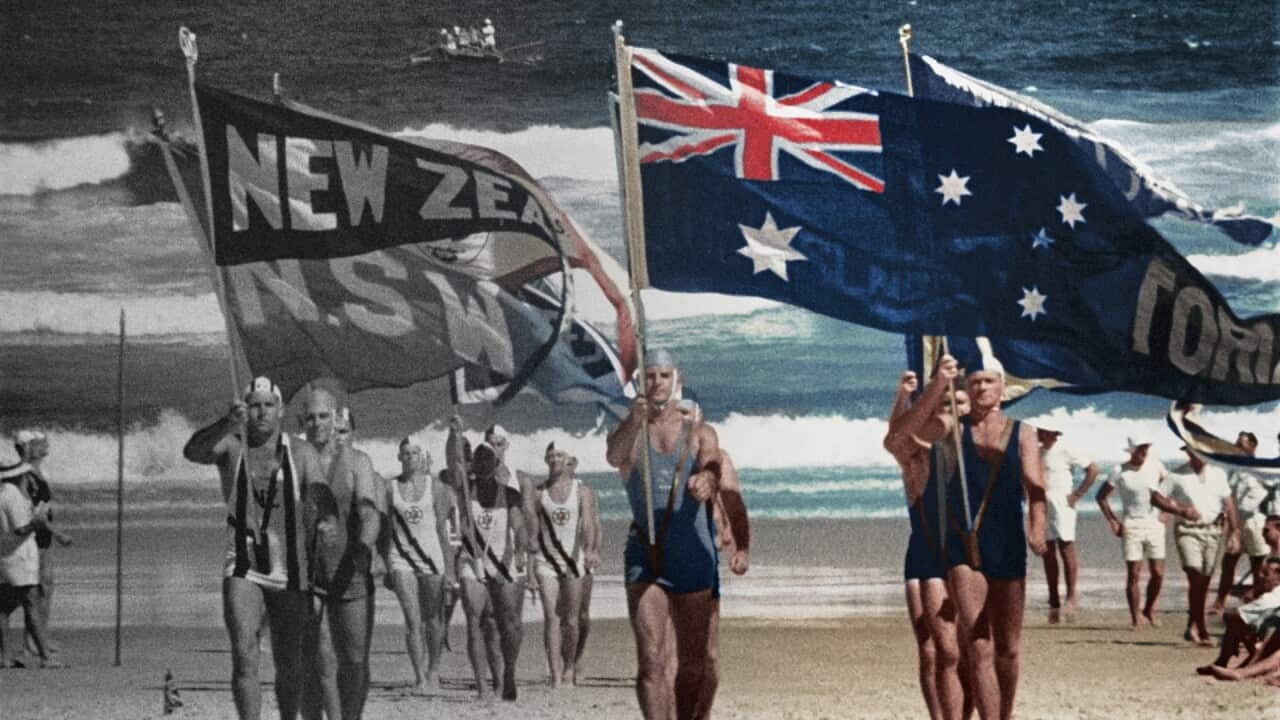All national myths are reductive. There’s no way to neatly encapsulate the thoughts, feelings, hopes and dreams of an entire population within one iconic avatar we all strive to inhabit. That said, here’s how the mainstream Australian view of ourselves has evolved over the years.
Outpost of Empire: from gold-diggers to Gallipoli
On either side of Federation in 1901 – – we had foundational myths that were all about heroism, adventure and egalitarianism. They were also all about being male, if you were frowning at the use of “man” in the first line there. From the mid-1800s, our continent was being explored and tamed by rugged individualists who worked hard to find gold, didn’t take lip from the troopers and would rather drown in billabongs than be taken alive.
On the other side of the Federation divide, we were out in the world fighting for Empire, and being roundly mistaken for officers because we were better fed and more tan than your standard Tommy infantryman. Australia was a land of larrikins who did what needed to be done for the good of the world, coming of age against the unforgiving guns of Johnny Turk (and ).
From UK to USA: a nation of Menzies-ness
The era roughly bracketed by the Prime Ministerships of Sir Robert Gordon Menzies (he served at the helm in 39-41 and again from 1949-66) is when Australia truly became the world’s suburb, a relaxed and comfortable nation of lawn-mowers and Women’s Auxiliary bakers that John Howard spent his entire prime ministerial tenure attempting to take us back to. While we still had a great pride in our British traditions, especially since there was a hottie on the throne now, the appearance of American soldiers on Aussie soil got our dander up (why else would we have called our new currency “the dollar” instead of the Menzies-preferred “royal”?).
And, of course, we were gracious enough to begin allowing a few men of other races to enter the mainstream – in 1957 Albert Namatjira became the first Aboriginal person to be granted any kind of Australian citizenship. All in all, it was a time for smug self-reflection.
Cultural cringe: what’s Australia given the world (aside from Vegemite and pavlova [contested])?
In the lead up to the massive cultural and political upheavals that defined the Prime Minister-ships of Sir William McMahon (1971-72) and Gough Whitlam (1972-75), there was a standard operating procedure for Aussie expats – move to the UK and start slagging off your homeland for being insular and suffering a “cultural cringe”. Dame Edna Everage and Sir Les Patterson are the fictional nobles who encapsulate how we saw ourselves ).
As The Bulletin reported in late 1974, “…when the Whitlams were entertaining British TV man David Frost for dinner recently they are said to have offered him a French wine. Frost, the story had it, remarked: ‘You don’t serve Australian wine here?’ To which Mrs Whitlam replied: ‘What kind of people do you think we are?’”
C’mon Aussie C’mon: from America’s Cup to Muriel’s Wedding
Much like the myth that developed either side of Federation, there’s a period of almost two decades with the 1988 Bicentenary roughly in the middle where Australians started to love themselves sick. It started with our America’s Cup win in 1983, and lasted all the way through our international cinematic renaissance – Young Einstein, The Adventures of Priscilla, Queen of the Desert and Muriel’s Wedding had us happier to be on international screens than at any time in our pre-Hemsworth history.
On the small screen, we opened up TV roles to incorporate people of Mediterranean heritage, too, as long as they were willing to be told to leave their money on the fridge like Lex Marinos or play up to stereotypes we could all enjoy like Nick Giannopoulos and Con the Fruiterer. Effie even won a Logie!
Laidback wannabes: battler becomes lifter and bludger becomes leaner
Today, our national myth is more aspirational than actual. Silvertail politicians attempt to make “fair dinkum” sound natural coming from their mouths, and we all like to think of ourselves as the laid back larrikins who marched into the Somme or climbed off the Sydney Harbour Bridge to become Crocodile Dundee.
On the other hand, if you find yourself on a Sydney train coming into Central Station, you might notice there are three separate warning stickers begging people not to mess with the doors. What this says about how laid back we may or may not be in the 21st century is best left as an exercise to the reader.
Experience Australia’s story brought vividly to life when the 4-part series Australia in Colour premieres at 8.30pm on Wednesday 6 March on SBS. Available anytime, anywhere on your favourite device after broadcast on SBS On Demand.





